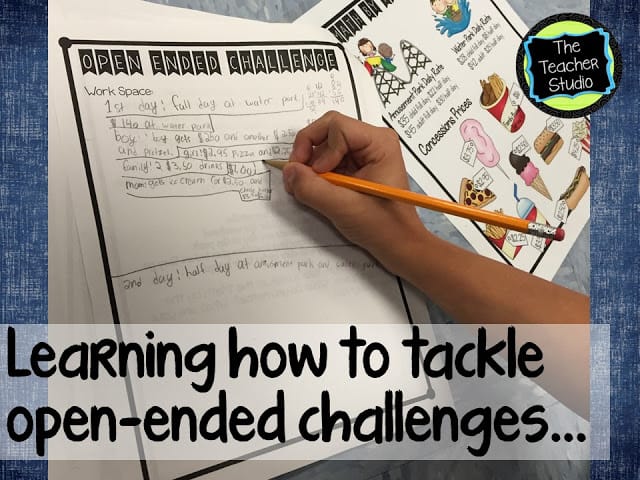As you know, I am a huge believer in incorporating problem solving into math class whenever possible. Over the years, it is has become more and more clear that students are on a quest to “get the right answer”. They don’t value the problem solving process as much as what gets written on the line at the end–and I started my quest to change that thinking.
I want my students to enjoy the challenges. To be willing to dig in and try. To try to figure out how to get started…and to work alone and collaboratively to really dig in and tackle a problem…even when it isn’t always clear or might not result in a nice, tidy answer.
In addition to immersing my students in word problems on a variety of topics all year long, I felt it was important to start putting them in “real world” math situations where they had a task to complete–and no clear cut starting point. I wanted them to talk about the problem. Work together. To have to organize their thinking…debate back and forth…realize when things have gone astray…and then even accept that there are many ways to approach the problem. I wanted them to be able to have math “stamina” where they worked on a task for extended periods of time–even DAYS–where they felt complete ownership in their work…despite their final answer.
This is where my quest to design open ended challenges for my students began. I couldn’t find ANYTHING out there to help me…so I made my own!
Last week I introduced the amusement park challenge to my students where they had to use a set of information to solve a budgeting challenge. I knew I wanted ALL my students to participate, so I differentiated it with numbers at different levels. I knew I wanted my students to practice their collaborative skills and math discourse, so we worked in partners and trios. I introduced the problem and then stepped back.
I watched. I listened. I coached when needed. I heard amazing things…and learned so much about what mathematical practices I still need to work on with my students.
I started stopping by groups and commenting on their organization. I asked questions about how they were labeling things…about how they were making sure they met all elements of the challenge…about how they were making sure they were working accurately. This was a great time for some teaching moments–without getting in their way!
After the first day, the challenge was tucked into their math folders to continue on in math workshop time. After one full day, students are just scratching the surface! I would have felt satisfied with this first day of work…but there is so much more we are going to do with it–and some students are REALLY excited to take on the additional challenges available after the task is complete.
Mission accomplished! Math was fun, engaging, meaningful, and offered me a TON of opportunities to get to know my little mathematicians better!
Want to see what this problem is all about? Click the image below…or check out the other 6 “Thinker Task” resources in my store as well.











